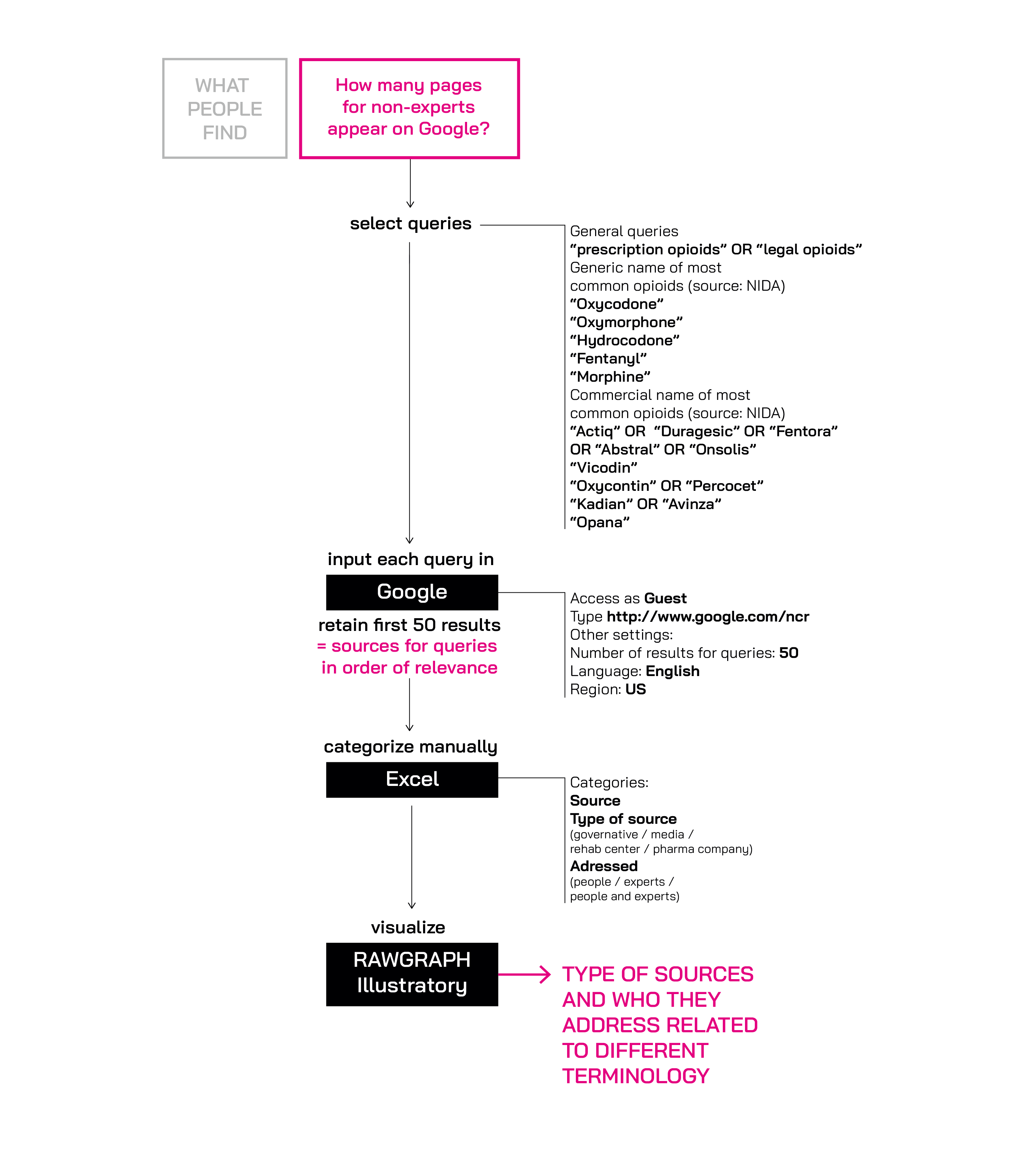Description
In the visualization it is possible to observe the amount of sources that appear on Google using different terminologies related to the same medicines. They are divided for type of source and for audience they address. It emerges that some medicines are more part of the ‘public domain’ whereas others remain well-known only in a specialized (expert) field. It is also possible to understand the level of relevance given to diverse medicines by different ‘actors’ (government, pharma companies, media). It is interesting to notice that if some medicines lead to educational results querying both generic and commercial names, for others the dominance of results for non-experts is visible only with one query. For example the generic name ‘Fentanyl’ leads to a lot of results for the public, especially due to the role that the media has had in spreading information about it, while the commercial names of Fentanyl (Kandian, Avinza..) are still not well-known by non-experts.
At the base of this protocol there is the fact that today the first thing anyone does when he wants to know something is probably to grab the phone or open the laptop and type on Internet whatever he is looking for. This is what we also did when learning about the opioid crisis. As we noticed that the results were changing significantly with different – but equally important – queries, we decided to focus our attention on those changes as an indicator of the level of awareness around the medicines of interest and knowledge of their names. So we asked ourselves how many sources addressing non-experts it is possible to find on the topic and if and to what extent that information vary based on the specific terminology used to search for it.
To obtain these results, first of all, we have selected the keywords for our research on a range from general queries (‘prescription opioids’ or ‘painkillers’) to the generic names of most common opioids (‘oxymorphone’, ‘hydromorphone’, ‘morphine’…) to the commercial names of those opioids (‘Duragesic’, ‘Fentora’, ‘Abstral’). The most common opioids have been selected according to NIDA list. We conducted our research using a VPN and making sure the Google location was set on United States in order to get results relative to our audience of interest. We collected the first 50 results for each query based on the relevance and categorized them on Excel. They were categorized for type of source (governmental, pharma company, rehab centre, media) and for recipients (the people for whom those articles have been created: non-experts, experts, non-experts and experts). Finally we used RAWGRAPH and Illustrator to show our results.
Protocol

Data
Data Source: DensityDesign
Timestamp: November 2018
View Data (500Kb)
These folder contains eleven dataset about the research on google queries: in each dataset there are information about the first fifty results of research on : prescription opioid in general, generic opioid name (fentanyl, hydrocodone,oxycodone,morphine,oxymorphone) and respectively their brand name.